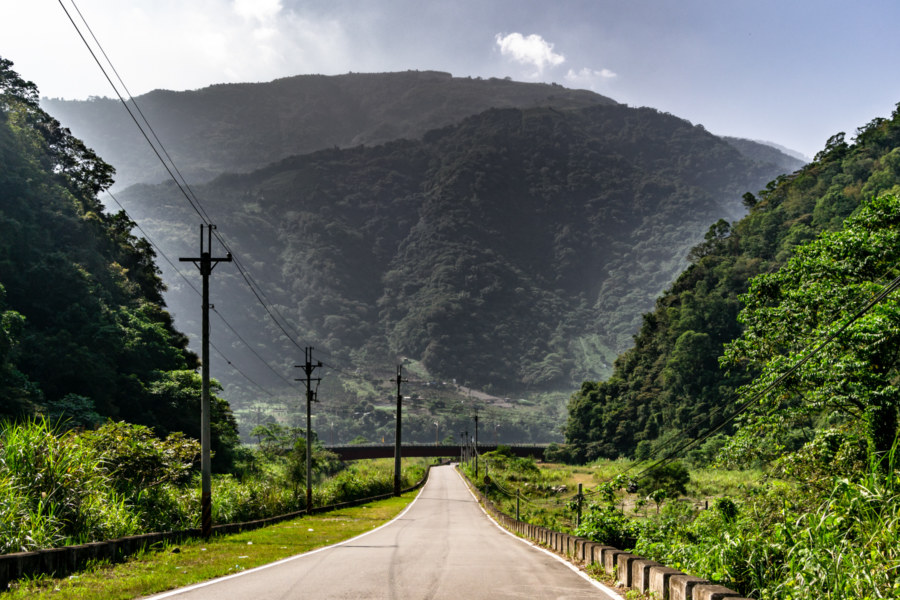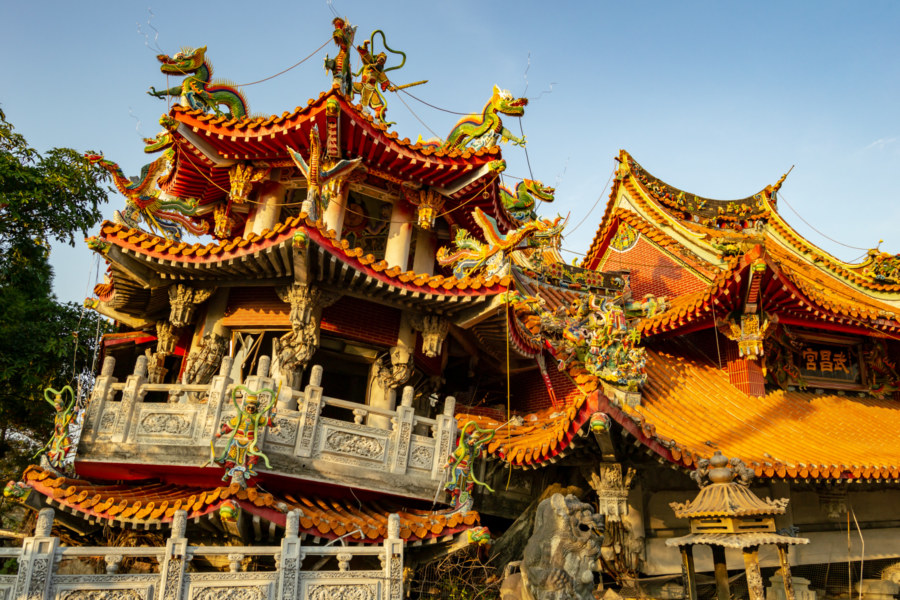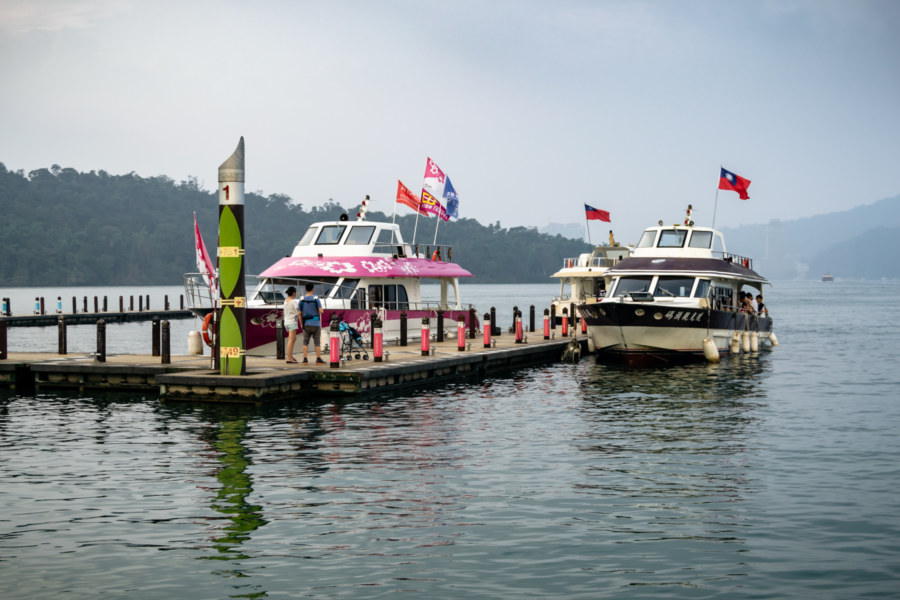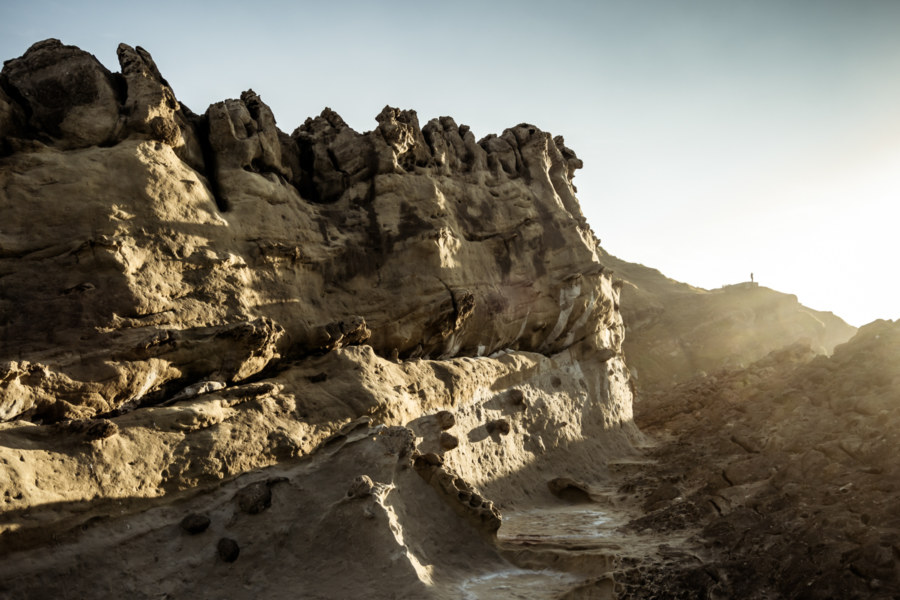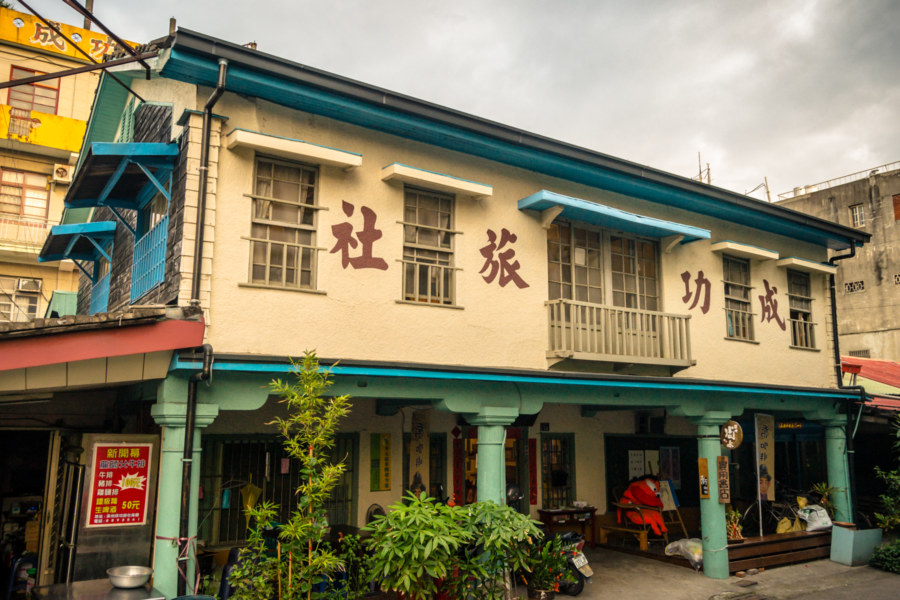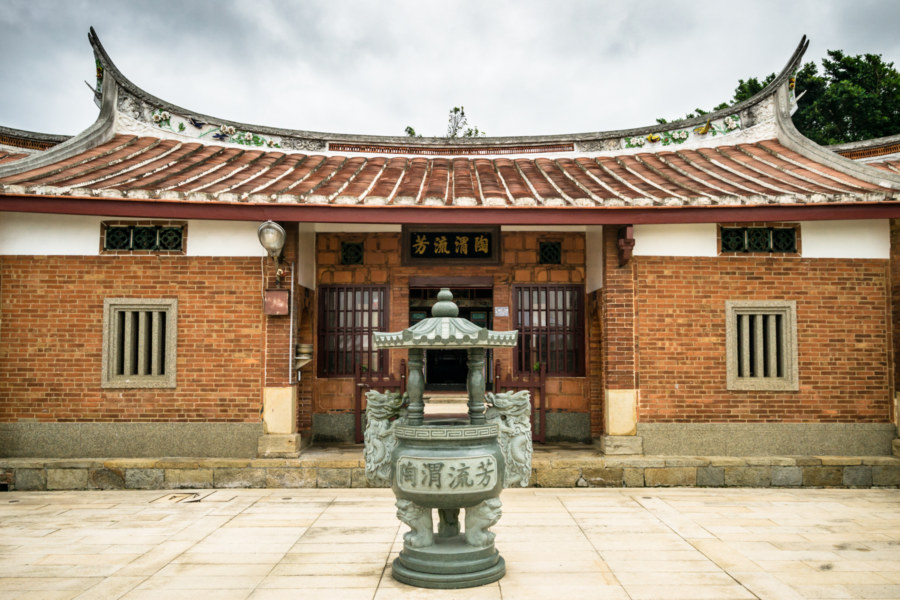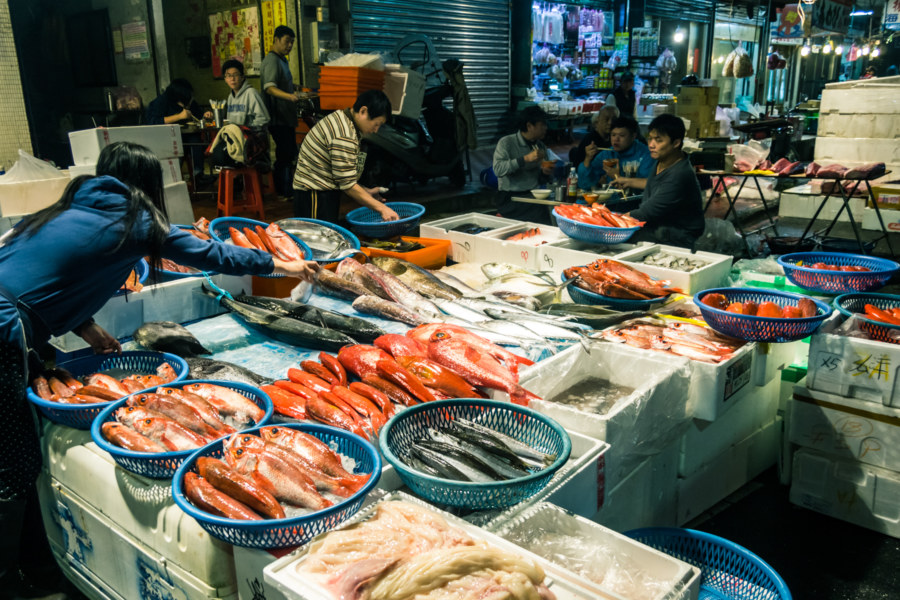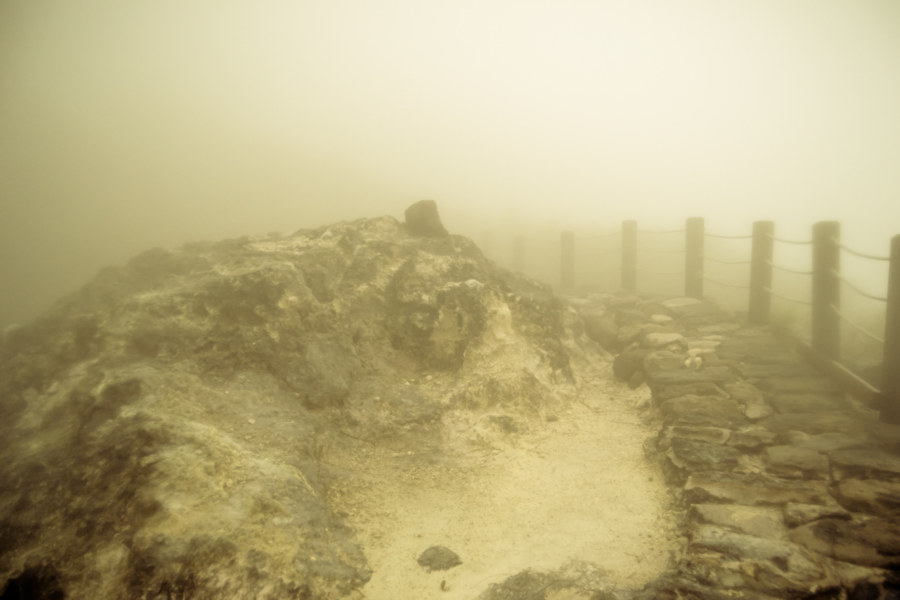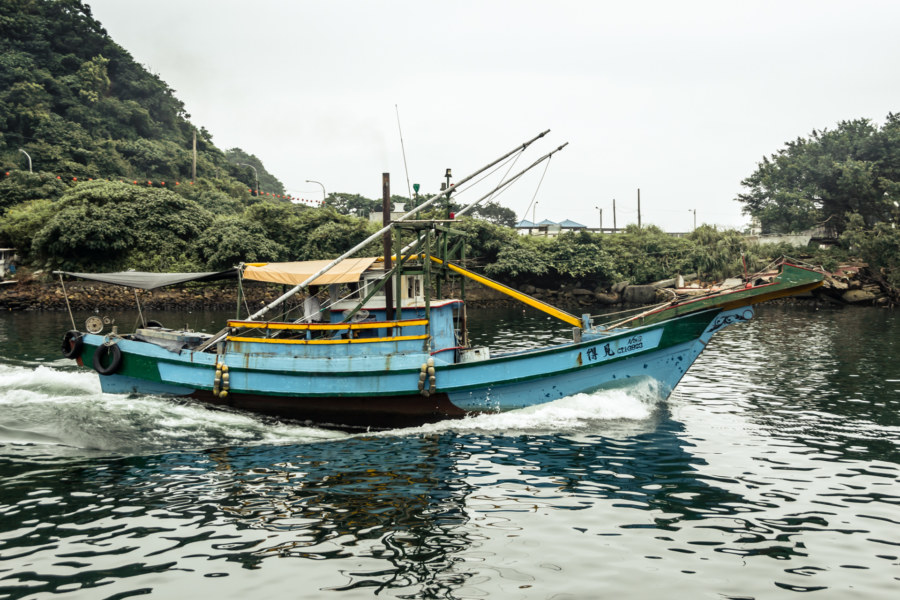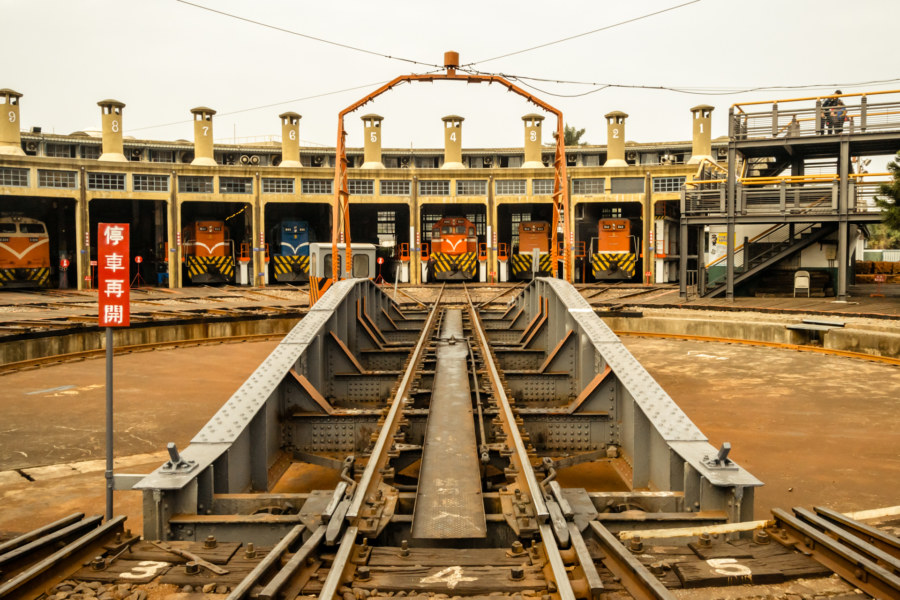This post is the final entry in a series documenting several days of riding around Nantou in October 2015. On the last morning of this trip I woke in Puli, close to the geographic center of Taiwan. I only had to return the scooter to the rental shop in Taichung sometime after nightfall so I decided to take a more circuitous route and check out many sights along the way. After a quick breakfast I headed south, briefly stopping by the shores of the majestic Sun Moon Lake (日月潭, covered in the previous entry in this series), and ascended a winding mountain access road leading into Xinyi, one of several majority Taiwanese Indigenous districts in this landlocked county.
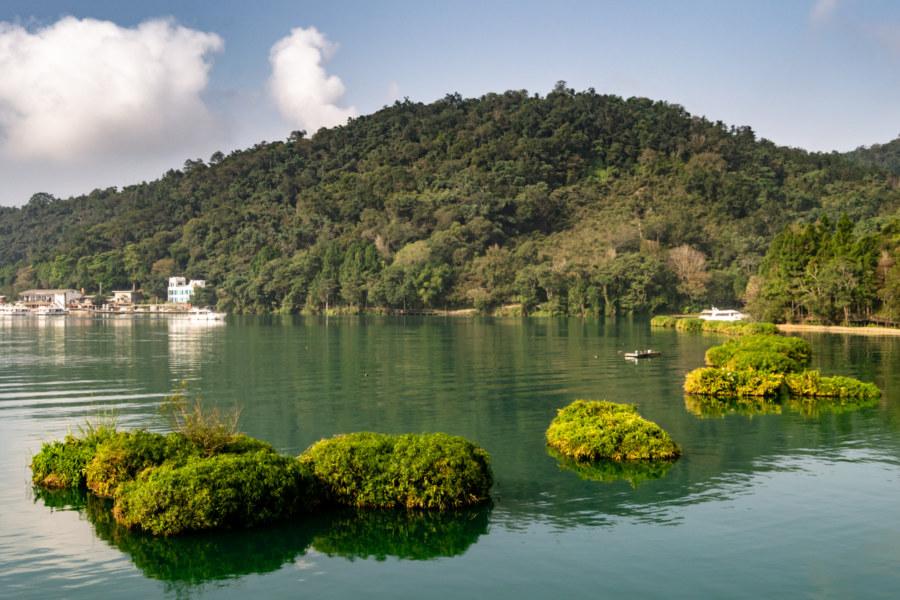
These places are popular tourist attractions (旅遊景點) in Taiwan (or should be, anyway).
Jiji Wuchang Temple 集集武昌宫
Wǔchāng Temple 武昌宮 is one of many remnants of the devastating 921 Earthquake, which ripped through central Taiwan on September 21st, 1999, toppling tens of thousands of buildings and claiming nearly 2,500 lives. Located in the rural township of Jiji in Nantou, less than five kilometers from the epicenter of the magnitude 7 quake, this temple was destroyed mere months after it was completed. Rather than clear the debris, the damaged structure was left more or less as it was the morning after it collapsed, and a new temple with the same name was built in front. Nowadays this ruined temple is a popular roadside attraction and a prime example of disaster tourism in Taiwan.
Nantou Road Trip 2015: Puli to Sun Moon Lake
This post gathers photos taken on two scooter rides from Puli to the shores of Sun Moon Lake 日月潭 in Yuchi, part of a multi-day road trip undertaken in late 2015. I didn’t have a chance to explore as deeply as I would have liked, nor did I really know what was so special about this part of the country while I was there, so this post will be somewhat less extensive than most others in this series. I hope to someday return to the Sun Moon Lake area and gather material to make a fully informed post about this fascinating part of Taiwan.
Postcards From Badouzi 八斗子明信片
Near the end of my first summer in Taiwan I visited Bādǒuzi (八斗子), a rocky headland, coastal park, and major fishing port at the far eastern edge of Keelung. I went there on impulse, not knowing what to expect, just to see what was out there. Google Maps and Taiwan’s excellent public transit system make random explorations like this almost effortless: pick a point of interest and follow the directions—the digital equivalent of throwing a dart at a map. This post features a selection of retouched photos from this expedition alongside the sort of explanatory text I wouldn’t have been able to write back in 2013. Fair warning for arachnophobes: this post contains several gratuitous photos of giant spiders and other creepy crawlies!
Xizhou Chenggong Hostel 溪州成功旅社
During a recent visit to Xizhou, a small rural township in southern Changhua, I made a brief stop to check out the historic Chénggōng Hostel (成功旅社](https://www.facebook.com/pages/成功旅社農用書店/774365992596884)). I had no idea what to expect, having learned of its existence while browsing Google Maps in search of points of interest, and was pleasantly surprised by what I found there. It is privately owned and operated but they’ve gone to great lengths to preserve the building, transforming it into a tourist attraction and community space. The ground floor is home to a shop showcasing local products and a dual-purpose agricultural library and event space. Upstairs is something of a museum, lightly furnished with rickety beds and tatami mats. The floorboards creak and there is a mustiness about the place that makes it feel genuinely old. It wasn’t difficult to imagine what it might have been like half a century ago in the midst of the sugar boom.
Fanjiang Ancestral Hall 范姜祖堂
I chanced upon Fanjiang Ancestral Hall 范姜祖堂 while out for a bicycle ride around Taoyuan in late October 2015. That morning I set out from my place in Zhongli to see more of the countryside and eventually pay a visit to Fugang Old Street 富岡老街 in western Yangmei. Along the way I made a brief diversion into Xinwu to see whatever might be found there—and this cluster of historic Hakka homes were my reward.
Kanzaiding Fish Market 崁仔頂漁市場
Kànzǎidǐng Fish Market 崁仔頂漁市場 is supposedly the longest-running operation of its kind in northern Taiwan. Back in the Japanese colonial era the market was located along the banks of the Xùchuān River 旭川河 in Keelung, formerly a navigable canal running through the downtown core and emptying into the harbour. The name of the market is derived from a Taiwanese Hokkien term for the stone stairs that once lined the side of the canal; Kanzaiding literally means “top of the stairs”. The Japanese built a pier in the late 1920s, making it easy for fishermen to offload their catch next to the market, and convenient access to the railway network encouraged its growth.
A Foggy Hike in Yangmingshan 陽明山
These photographs were taken in early October 2013 while hiking around Yángmíngshān National Park (陽明山國家公園). After meeting up with a friend we took a bus from Jiantan Station in Shilin to Lengshuikeng with the intention of checking out Milk Lake (Niúnǎichí 牛奶湖). Racing up the meandering mountainside roads we soon found ourselves immersed in an interminable fog. Debarking at the bus stop, with hardly another soul around, we decided to wander around and see what we could make of our time in Yangmingshan.
Postcards From Nanfang’ao 南方澳明信片
Nánfāng’ào (南方澳) is a major fishing port in Su’ao, Yilan, on the east coast of Taiwan. It is located just south of the end of the Lányáng Plain (蘭陽平原), where a rocky headland juts out into the ocean to form a natural harbour. It opened in 1923 after development by the Japanese colonial authorities and is now considered one of the top fishing ports in the nation, often ranking in third place by measures unknown to me, and is particularly known for its record-breaking mackerel catch. Part of why the port is so productive has to do with the nutrient-rich Kuroshio Current (黑潮, literally “Black Stream”), which lies just offshore.
Changhua Roundhouse 彰化扇形車庫
One of the most extraordinary attractions in Taiwan is the historic Changhua Roundhouse 彰化扇形車庫, originally built in 1922 during Japanese colonial rule and still in operation today. Although information is hard to come by it seems that it might be the only roundhouse still operating in Asia—and certainly one of the oldest still in regular use anywhere in the world. Every other roundhouse I researched for this article has been abandoned, demolished, repurposed, or converted into a museum—and those rare few that are still operational have been mighty hard to date. As such, the Changhua Roundhouse is a dream to visit for a railway enthusiast like myself, particularly since the ambiance hasn’t been ruined by the sort of tacky treatment you’ll often find at Taiwanese tourist attractions. After signing in with the guard at the gate I had free run of the place—and as you can see from some of the following photos, nobody minded me getting shockingly close to moving trains as the mechanics went about their daily routines.
